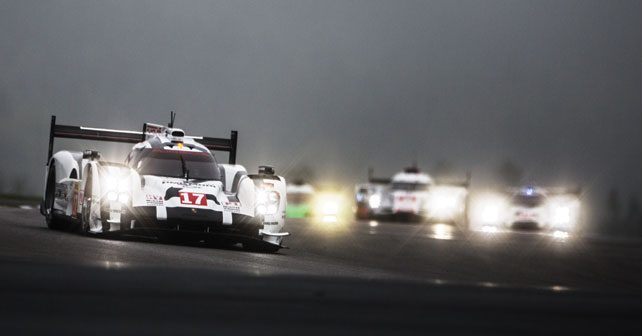An authoritative win at the Nurburgring suggests Porsche will clinch the 2015 manufacturers’ crown.
Porsche’s dominant one-two finish at the Six Hours of Nurburgring is significant in the context of the 2015 WEC season.
At the opening two races of the year, teams tend to run Le Mans-suited chassis in order to increase their prospects at the prestigious 24 hour race. So, it’s only when you arrive at the Nurburgring that you get a clear picture of the pecking order.
Take last year, for instance. While Audi cruised to victory at Le Mans in the hands of Andre Lotterer, Benoit Treluyer and Marcel Fassler, its R18 e-tron quattro was clearly second best to Toyota’s TS040 Hybrid over the course of the season.
Therefore, Porsche’s result at home turf suggests that it is pretty much going to have things it’s own way in 2015. Not only did they beat the Audis by over a lap, it’s the manner in which they did that shows the pace advantage they have over their VW Group rival.
Struggling with aero issues, Timo Bernhard was forced to fend off Loic Duval’s #8 Audi in the early stages of the race. But once fitted with a new front wing, the Porsche was quickly up to pace, eventually winning the race by a sizeable margin. Similarly, the #18 Porsche finished second, despite incurring 95 seconds worth of stop/go penalties for repeated technical infringements.
Porsche’s increased advantage can be attributed to the new high-downforce package for the Nurburgring, which it will retain for the remainder of the season. This could also explain why it lost out to Audi under cornering prior to Le Mans.
New 2016 car for Toyota
Porsche’s rise to prominence in the World Endurance Championship has coincided with a severe drop in form for Toyota. Last year’s WEC championships have been completely sidelined from the picture this year, and can be seen running multiple laps behind the German manufacturer.
This has forced Toyota Motorsport to radically overhaul its car for next year, in a bid to challenge the VW brands once again. Gone will be the supercapacitor that the Japanese manufacturer has used since the inception of its sportscar programme in 2012. A brand new power unit will be introduced instead, with lesser number of cylinders and increased electrical power.
The improvements on the car will be backed by an increased budget from Toyota’s management, suggesting the opening of a spending war between the manufacturers in the premier class of WEC.
Whatever the case might be, it’s clear that Porsche’s idea of utilising a smaller engine is perfect for the current fuel-centric regulations. The Weissach based squad has packed a two-litre, four-cylinder, petrol engine in the 919 Hybrid, with an efficient 8mj energy recovery system.
The team has built on its 2014 package, making incremental gains from each part of the car. The team has moved to the highest 8mj category, while the chassis itself is lighter than the one used last year.




























Write your Comment